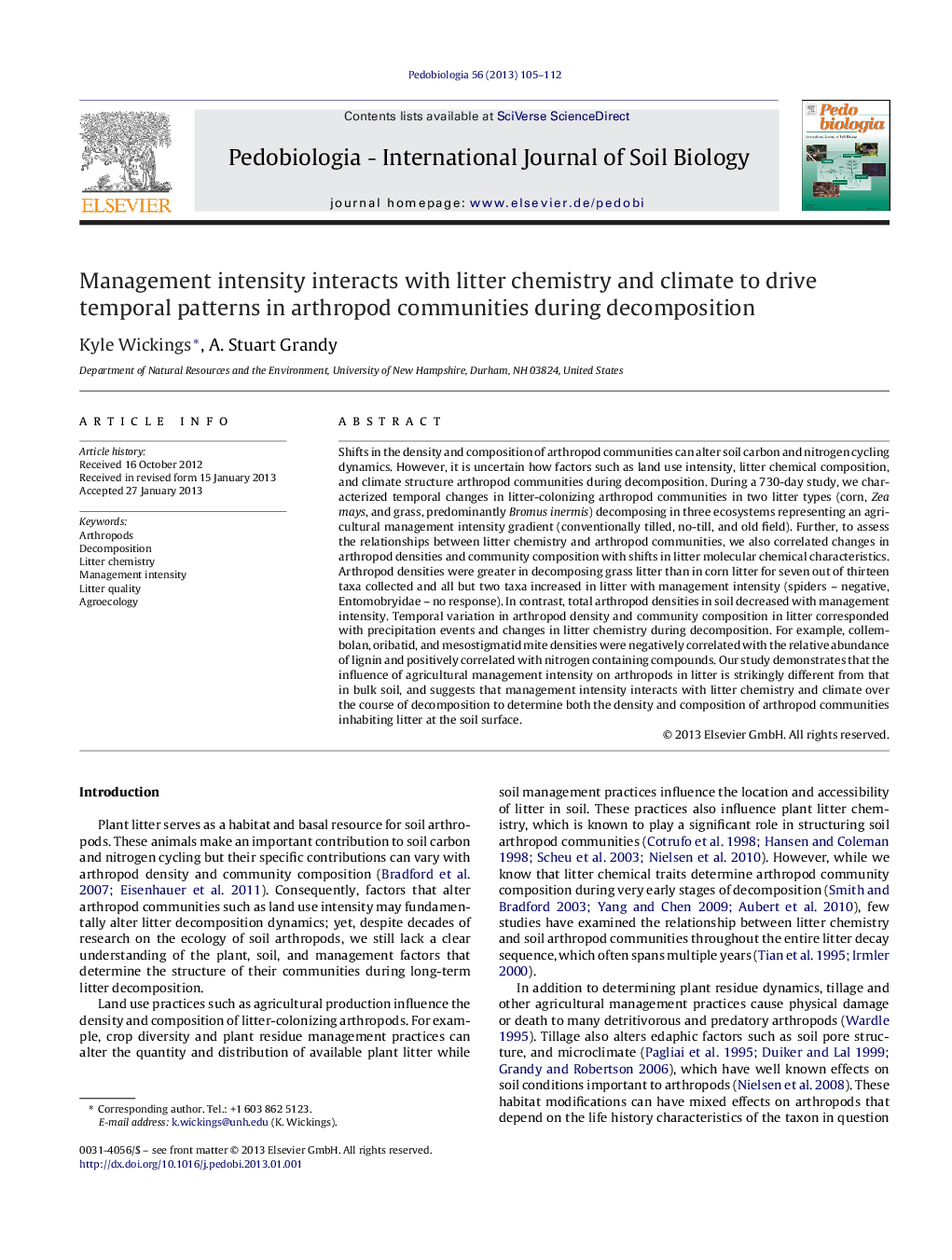| کد مقاله | کد نشریه | سال انتشار | مقاله انگلیسی | نسخه تمام متن |
|---|---|---|---|---|
| 2061115 | 1076436 | 2013 | 8 صفحه PDF | دانلود رایگان |

Shifts in the density and composition of arthropod communities can alter soil carbon and nitrogen cycling dynamics. However, it is uncertain how factors such as land use intensity, litter chemical composition, and climate structure arthropod communities during decomposition. During a 730-day study, we characterized temporal changes in litter-colonizing arthropod communities in two litter types (corn, Zea mays, and grass, predominantly Bromus inermis) decomposing in three ecosystems representing an agricultural management intensity gradient (conventionally tilled, no-till, and old field). Further, to assess the relationships between litter chemistry and arthropod communities, we also correlated changes in arthropod densities and community composition with shifts in litter molecular chemical characteristics. Arthropod densities were greater in decomposing grass litter than in corn litter for seven out of thirteen taxa collected and all but two taxa increased in litter with management intensity (spiders – negative, Entomobryidae – no response). In contrast, total arthropod densities in soil decreased with management intensity. Temporal variation in arthropod density and community composition in litter corresponded with precipitation events and changes in litter chemistry during decomposition. For example, collembolan, oribatid, and mesostigmatid mite densities were negatively correlated with the relative abundance of lignin and positively correlated with nitrogen containing compounds. Our study demonstrates that the influence of agricultural management intensity on arthropods in litter is strikingly different from that in bulk soil, and suggests that management intensity interacts with litter chemistry and climate over the course of decomposition to determine both the density and composition of arthropod communities inhabiting litter at the soil surface.
Journal: Pedobiologia - Volume 56, Issue 2, 10 March 2013, Pages 105–112